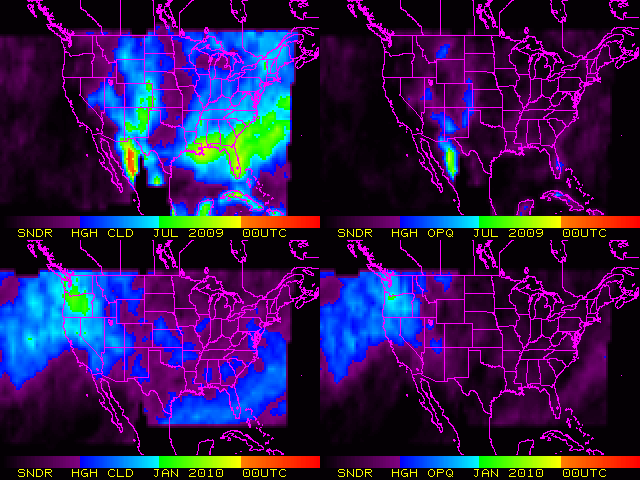
[ Archive ]

 |
ASPB and CIMSS Weekly Report
[ Archive ] |
 |
IN THE PRESS:
ITEMS FOR THE ADMINISTRATOR:
ITEMS FOR THE ASSISTANT ADMINISTRATOR:
ITEMS FOR THE OFFICE DIRECTOR, STAR:
Tenth International Winds Workshop: The Tenth International Winds Workshop (IWW) was held in Tokyo, Japan, February 22-26, 2010. It was hosted by the Japan Meteorological Agency. The IWWs are an ideal forum for interacting with the numerical weather prediction (NWP) community on product developments, forecast impacts, and problems. Scientists from the international satellite and numerical weather prediction communities participated in the workshop, with representatives from (but not limited to) the U.S., the U.K., France, Germany, Spain, Japan, Korea, China, Australia, and New Zealand. NOAA personnel in attendance included J. Key and J. Daniels (co-chair); participating Cooperative Institute for Meteorological Satellite Studies (CIMSS) scientists included C. Velden, D. Santek, R. Dworak, S. Wanzong, J. Jung, and H. Berger. (J. Key, E/RA2, 608-263-2605, jeff.key@noaa.gov)
ITEMS FOR THE DIVISION CHIEF, CoRP:
CIMSS Recompetition Proposal Submitted: The Cooperative Institute for Meteorological Satellite Studies (CIMSS) at the University of Wisconsin-Madison submitted its recompetition proposal to Grants.gov. (S. Ackerman, CIMSS, 608-263-3647)GOES-R Version 4 Legacy Atmospheric Profile Algorithm Delivered: The Geostationary Operational Environmental Satellite (GOES)-R algorithm working group (AWG) sounding team has delivered the version 4.0 legacy atmospheric profile (LAP) algorithm to the algorithm integration team (AIT) through Geostationary Cloud Algorithm Testbed (GEOCAT). The output of LAP version 4.0 contains quality flags, the delivered version has been tested both in GEOCAT and in AIT computer system, the sounding team has reviewed the differences in the LAP level 2 product output and determined that they are acceptable according to the requirements. (Jun Li, 608-262-3755, Xin Jin, Graeme Martin, and T. Schmit)
GOES-R AWG Version 3 and Version 4 Algorithm Deliveries: The Cooperative Institute for Meteorological Satellite Studies (CIMSS) delivered version 3 Geostationary Operational Environmental Satellite (GOES)-R algorithm working group (AWG) overshooting-top/enhanced-V and turbulence algorithms to GOES-R Algorithm Integration Team (Walter Wolf NOAA/NESDIS). GOES-R AWG version 4 algorithm deliveries for clouds, ozone, fires, and soundings were also made this week. (W. Feltz, CIMSS,
608-265-6283 and W. Straka III, CIMSS)
 (Click image to enlarge)
(Click image to enlarge)VISITORS:
NEXT WEEK:
LOOKING AHEAD:
| Archived Weeklies Page | Submit a report item |